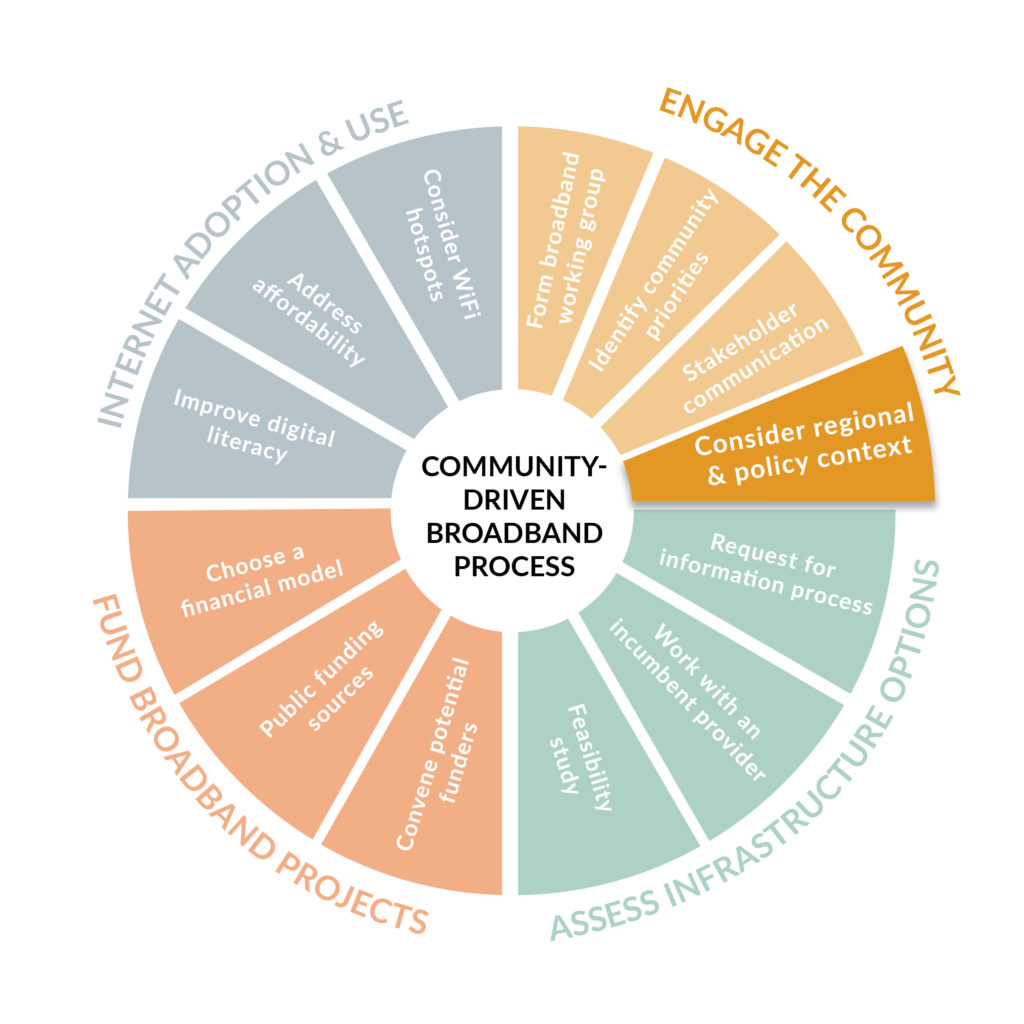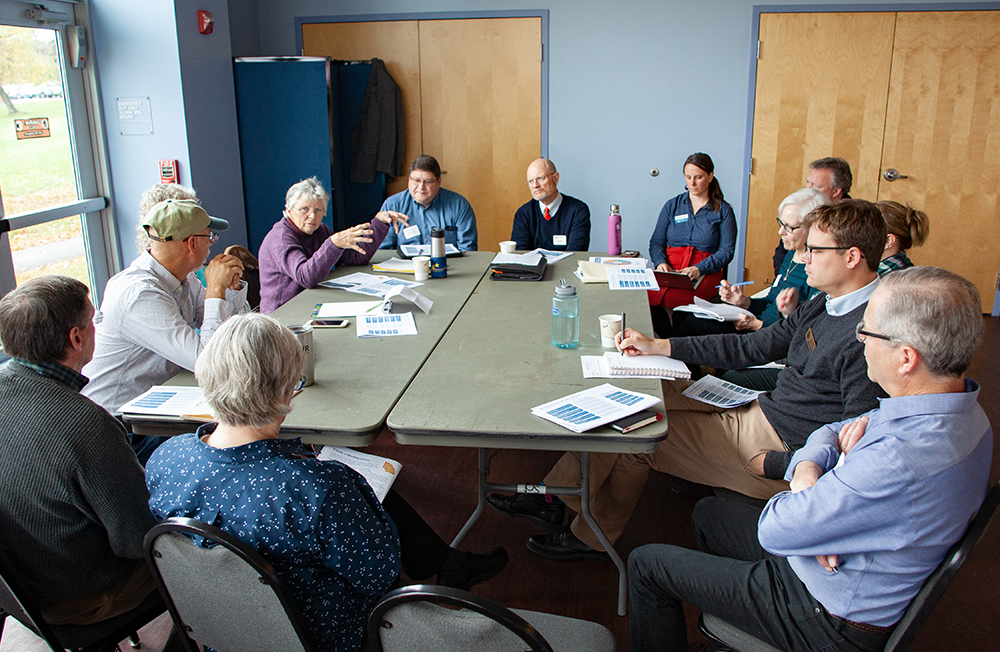
Being aware of the regional and policy around broadband can lead to the discovery of additional resources and opportunities, as well as help to anticipate any obstacles or challenges that might be faced as the community pursues better internet connectivity.
Putting together community meetings or a regional conference is a great way to provide space in order to discuss the economic and social value of broadband, and to build enthusiasm and support for internet improvement projects. By inviting internet service providers and public funders, communities can learn about the options available to them. Community members can collaboratively plan with one another and with neighboring communities.
HOW IT WORKS
In some cases, a regional organization can help convene communities. The Island Institute holds annual broadband summits to bring together coastal communities who are working to improve their internet connectivity. The first summit provided space and time for community learning and collaboration, as goals and options were identified. The second summit focused on lessons learned and strategies for pursuing broadband options. Learn more and access summit materials on our Broadband Resource page.
In other cases, communities reach out to one another as their broadband efforts overlap. In Casco Bay, three islands realized their solutions would be very costly but that they might find efficiencies by sharing their existing internet infrastructure and by increasing the number of potential customers, if they joined forces. In the course of investigating their existing infrastructure, several islands and Brooklin on the Blue Hill Peninsula discovered that they have shared internet and cell phone infrastructure networks, and any solution in one community could impact or be leveraged by another community.

KEY FACTORS
- Identify a purpose. It’s important that a regional or strategic meeting be outcome-focused. This helps form an agenda, which will culminate in concrete steps to move forward.
- Prepare facilitators and speakers. Clarify the goal of the meeting and each person’s role. What information will attendees gain from the presentation, and what will be helpful to discuss? Prepare questions for your speakers based on those considerations. Provide thoughtfully crafted questions to initiate productive group discussion. Have experts float between group breakouts to further guide discussion toward developing next steps or other desired outcomes.
- Mix it up. Maintain attendees’ engagement by having a thoughtful structure to the meeting: speaker presentation to full group, small group breakout sessions, large group panel discussions, etc. Different formats lend well to different purposes: inspiration or seeing the big picture, collaborative networking or planning next steps, learning how pieces come together or comparing stories, strategizing policy changes or sharing expertise, etc.
- Provide networking time. Productive conversations may occur one-on-one, not just in group breakouts. Mixing up how attendees participate throughout the meeting can maximize the opportunities for valuable discussion.
- Follow up. Ensure that participants take away something physical (or digital) from the meeting that will remind them of the purpose, goal, and next steps. Meeting materials can include speaker and expert biographies, and attendees’ contact information for continued learning and collaborations.
CHALLENGES
- Time for planning. There are a lot of logistics around bringing groups of people together, whether the event is for a dozen or 100 people. Working backward from the date of the meeting can be helpful in planning: when does RSVP need to be done, when do invitations need to be sent, when do speakers or facilitators need to be confirmed, when does the venue need to be reserved, etc. Include recruitment of volunteers into this timeline: who will help plan and execute the meeting?
- Cost. The benefits of holding a large meeting should justify the cost. Along with identifying the purpose of a meeting, consider its cost. Are there community or regional institutions interested in sponsoring the event? Are there donors or community members than can offer in-kind contributions, such as food?
- Building in enough time. Sharing experiences involves providing detailed examples, and this can take longer than expected. It’s helpful if the emcee can give the introduction and overview for the audience, so the speaker can dive into engaging stories about their work.
- Timing of the event. Consider when the meeting should occur to maximize attendance. Keep individual schedules in mind and plan accordingly to ensure that everyone who should be included is able to be there.
RESULTS
- After a productive joint meeting, the three islands in Casco Bay formed the Down Bay Technology Task Force and issued a Request for Information to solicit engineered infrastructure designs that leverage existing networks for a cost-effective broadband solution.
- The telecommunications working groups of several communities in Penobscot and Blue Hill Bays have connected through the Island Institute, to further understand how their potential options for improved internet and cell service are linked, and to consider how they may collaborate on solutions.
Originally published February 2017

